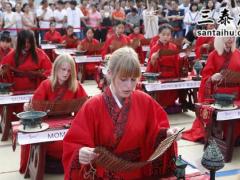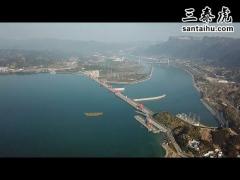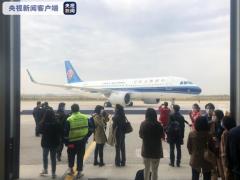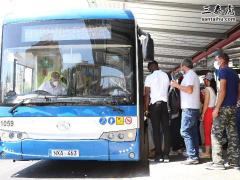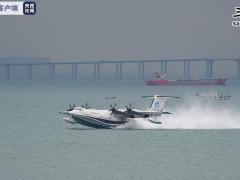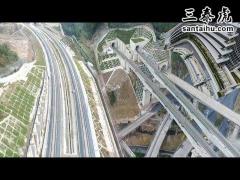朝鲜战争后,韩国人的生活是怎样的? [美国媒体]
quora网友:战争之后吗?对于习惯了西方生活的任何人来说,那段时间可以用一个词来形容:地狱。重建韩国,美国几乎没提供什么支持。韩国人均GDP接近、甚至经常低于朝鲜,直到1970年代,情况才稍有改观。独裁统治持续到80年代:我们家的信,有时会被截获和没收。就像今天的朝鲜,那是的韩国是美国的缓冲地带,没有其他的意义可言......
What was life after the Korean war for South Koreans?
朝鲜战争后,韩国人的生活是怎样的?
Shane Ryoo, a student of history. Updated Jul 17, 2017
Immediately after the war? In a word, for anyone used to modern Western society: Hell.There was little U.S. support to rebuild the Republic of Korea. The GDP per capita of the RoK was similar and often lower than the DPRK’s until the 1970s. It was still a dictatorship until the 1980s: our family’s mail was intercepted and confiscated on occasion. Like the DPRK today, it was a buffer state against enemies and not much more.Most telling? I’m ethnic Korean, and neither my grandparents nor my parents talk about life during that period. They were doctors, and being educated can get you killed under a dictatorship, as both my family and my Taiwanese wife’s family will tell you . There was a lot of fear.When I ask my father about visiting Korea or possibly moving back, he says, “There’s nothing left for me there.” His Korea isn’t the Seoul you see today. It’s his hometown on the Pusan Perimeter and war on his doorstep as a toddler. It’s where speaking one’s mind could get you imprisoned or “disappeared.”While I try to emphasize to my kids where we’re from and how far we’ve come, my parents want to spare them that experience.
战争之后吗?
对于习惯了西方生活的任何人来说,那段时间可以用一个词来形容:地狱。
重建韩国,美国几乎没提供什么支持。韩国人均GDP接近、甚至经常低于朝鲜,直到1970年代,情况才稍有改观。独裁统治持续到80年代:我们家的信,有时会被截获和没收。就像今天的朝鲜,那是的韩国是美国的缓冲地带,没有其他的意义可言。
谁最有说服力?我是韩裔,我爷爷奶奶和爸爸妈妈,他们都不愿提起那段时间的生活。他们是医生,在独裁统治下,你受过教育可能就会被杀掉,我的家人和我台湾妻子的家人,他们都会这么跟你讲。那个时候充满了恐惧。
当我让父亲去韩国旅游或者搬回韩国的时候,他说:“那里什么都没有了。”他的韩国,不是你今天看到的首尔。他的家乡是在釜山附近,战争就像门前的蹒跚学步的小孩,随时都可能跌倒爆发。在那里,一个人说出心中的想法,可能会去坐牢或者“消失”。
当我试图向孩子们解释,我们来自哪里,我们离家多远的时候,我的父母总是会阻止,不想让他们体验那些经历。
Kevin Jong Hun Kang, A former Army officer (1LT) who is now a chemical engineer Answered Jul 12, 2017
Seoul After Korean War 1953 OverviewSouth Korea remained as one of the poorest countries in the world after Korean War (1950–1953). The entire peninsula had been seriously exploited under the Japanese colonial rule (1910–1945), particularly during World War II. On the top of that, the following Korean War destroyed every single remaining thing in South Korea. Politically, the South was under the First Republic (1948–1960).PoliticsAlthough South Korea adopted a Western-style democracy from its establishment, its politics and democracy were extremely faulted and corrupted. Its main ideology was strong anti-communism. The President of the Republic of Korea at that time was Rhee Syngman, Ph.D. who had been also the First President of Provisional Government of Republic of Korea during the Japanese Occupation as well as one of the major independence activists during the colonial occupation period.The leading party in this era was Liberal Party (自由党) which has been notorious for cases of judicial murders and electorial frauds. The leading party even made use of major gangster groups in Seoul to violently obstruct opposition parties from political actions. The most notable leader of Seoul gangster groups that supported the leading party was Lee Chong-jae who had more than 30,000 gang members under his control. The leading party used him and his group members as a detached force.EconomyThe economic achievements in the post-war era of South Korea were very poor—its nominal GDP per capita was just over 70 USD, even much lower than at-that-time North Korea. The entire nation was economically supported by foreign aids. My father told me that, when he was an elementary student, his job was to cook watery congee in a large pot using forage maize donated by US Army for his classmates. Yes—maize for livestock in US was maize for people in Korea at that time. Only few people could have three meals per day at that time due to extreme nationwide poverty. Poverty and Poverty. It is all about.While nowadays South Korea uses Korean Won (KRW) as its currency, at that time, the currency unit of South Korea was Korean Hwan which is the result of denominations after liberation. The exchange ratio had been varied every year due to its unstable economy from 60 Hwan to 1 USD (post-war) to 1,000 Hwan to 1 USD (1960).April 19 Revolution—the downfall of the first republicYoung Demonstrators (ⓒ Amnesty International)On March 15th 1960, South Korea had its 4th Presidential Election and 5th Vice-Presidential Election. The leading party perpetrated all kinds and types of electorial frauds on this day; it manipulated ballot boxes, dispatched gangster members to kick out watchdog committees from opposition parties, and used all other thinkable means to make its Vice-President Candidate Lee Ki-bung the vice-president-elect. The police and the prosecution were all accomplices.This ridiculous election heated all citizens in fury. Major public demonstrations were held in all major cities in South Korea. The police opened fire on the protestors, and hundreds of citizens were killed. These massacres enraged citizens more. The leading party declared a martial law. On April 19th 1960, the Bloody Tuesday, millions of citizens, including college students, ordinary citizens, high-school students, professors, even elementary school students, participated in nationwide anti-government demonstrations and marched to the Presidential Office. Even the military under the martial law rescinded its support for the government. Finally, President Rhee resigned on April 26. The second republic which was a parliamentary republic led by Prime Minister Chang Myon was established as the result.This is a brief version of the first chapter of the history of South Korea during the post-war era. South Korea enjoyed one year of full democracy but its economy and politics were still very unstable and chaotic. In 1961, Lt. Gen. Park Chung-hee, father of recently-impeached South Korea President Park Geun-hye, staged a military coup, and subverted the second republic. The country entered a long and dark tunnel of military rule until 1987.
1953年之后的首尔
概论:
朝鲜战争(1950-1953年)后,韩国仍是世界上最穷的国家之一。日本殖民统治下(1910-1945年),尤其是在二战时期,朝鲜半岛被日本人剥削得淋漓尽致。最重要的是,接下来的朝鲜战争,也把韩国剩下的每一件东西都摧毁殆尽了。在政治上,南方的韩国处在第一共和国时期(1948-1960)。
政治:
虽然韩国建立时,采用的是西式的民主制,但是它的政治和民主却是极其腐败的。它的意识形态,是强烈反对共产主义的。当时韩国的总统是李承晚,作为韩国临时政府的第一任总统,他在日本殖民时期,是重要的独立运动人士。
这时的领导党是自由党,它因为司法谋杀和选举舞弊而臭名昭着。自由党甚至利用首尔的主要黑帮势力,暴力阻挠反对党的政治活动。支持自由党的黑帮组织里,最有名的头目是李崇杰,他的手下有3万个小弟。自由党利用他和他的黑帮作为分裂的力量。
经济:
韩国战后的经济非常差:人均GDP略高于70美元,甚至远远低于当时的朝鲜。整个国家的经济依赖外国的援助。我父亲告诉我,当他是小学生的时候,他的职责就是用美军捐赠的饲料玉米,在大锅里煮粥给他的同学吃。是的,在那时候,美国牲畜吃的玉米,是韩国人的口粮。由于全国性的的贫困,只有很少的人能一日三餐。贫穷,还是贫穷,是那时候所有的记忆。
现在韩国的货币是韩元,在那时候,韩国的货币是韩圆,韩圆是解放后使用的。由于经济不稳定,韩圆的汇率每年都在变,从朝鲜战争后的1美元兑换60韩圆,跌到1960年的1美元兑换1000韩圆。
4·19革命,第一共和国垮台
小学生们在游行
1960年3月15日,韩国举行了第四届总统选举和第五届副总统选举。在这一天,领导党操弄了各种各样的选举舞弊行为:它操纵投票箱;让黑帮将反对党从监督委员会里赶出去;使用各种你能想出来的手段,让李基邦当选副总统。警察和检查院都是他们的同伙。
这样荒谬的选举激怒了所有市民。韩国的所有主要城市,都举行了大规模的示威游行。警察向抗议者开了枪,几百人被杀死。这些屠杀激怒了更多的人。然后领导党宣布戒严。1960年4月19日,是个血腥的星期二,数百万人参加了全国反政府游行,包括了大学生、普通市民、高中生、教授、甚至还有小学生,他们都示威到了总统办公室。即使是戒严下的军人,也都不再支持政府。最终,李承晚于4月26日辞职。由张冕总理组阁建立了议会制的第二共和国。
这是朝鲜战争后,韩国近代历史第一章的简介。韩国实行了一年的全面民主,但它的经济还是不稳定、极其混乱。1961年,最近被弹劾的朴槿惠总统的父亲,朴正熙中将,发动了军事政变,颠覆了第二共和国。韩国又迎来了漫长黑暗的军事统治,直到1987年才结束。
版权声明
我们致力于传递世界各地老百姓最真实、最直接、最详尽的对中国的看法
【版权与免责声明】如发现内容存在版权问题,烦请提供相关信息发邮件,
我们将及时沟通与处理。本站内容除非来源注明五毛网,否则均为网友转载,涉及言论、版权与本站无关。
本文仅代表作者观点,不代表本站立场。
本文来自网络,如有侵权及时联系本网站。
图文文章RECOMMEND
热门文章HOT NEWS
-
1
Why do most people who have a positive view of China have been to ...
- 2
- 3
- 4
- 5
- 6
- 7
- 8
- 9
- 10
推荐文章HOT NEWS
-
1
Why do most people who have a positive view of China have been to ...
- 2
- 3
- 4
- 5
- 6
- 7
- 8
- 9
- 10


